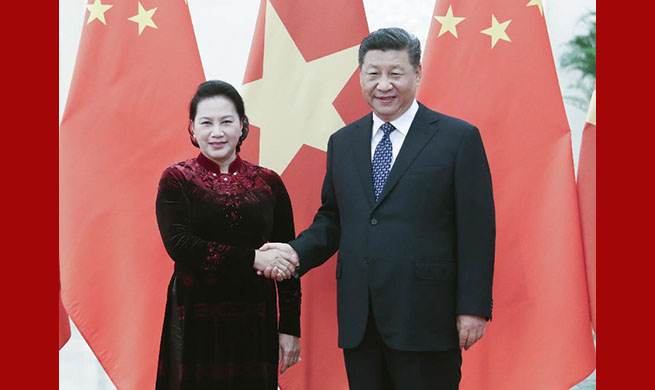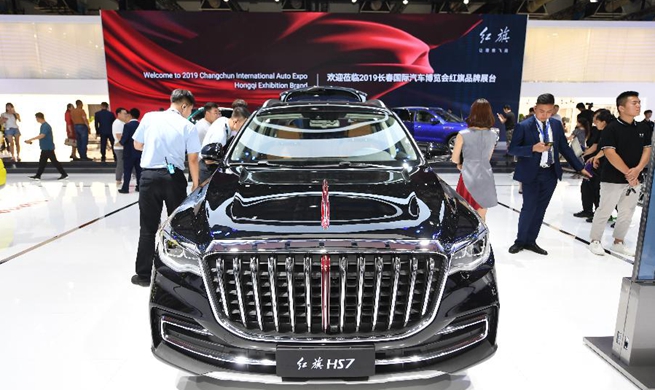BEIJING, July 12 (Xinhua) -- China's foreign trade managed to maintain stable growth in the first half of this year amid global uncertainties.
Total foreign trade volume reached 14.67 trillion yuan (2.14 trillion U.S. dollars) in H1, up 3.9 percent year on year, data from the General Administration of Customs (GAC) showed Friday.
Exports expanded 6.1 percent while imports rose 1.4 percent. China saw its trade surplus widen by 41.6 percent year-on-year to 1.23 trillion yuan during the same period.
China' foreign trade in H1 made steady progress and achieved quality development, GAC spokesperson Li Kuiwen told a press conference.
The country's trade mix continued to improve in H1 with the general trade growing both in volume and proportion. General trade grew 5.5 percent year-on-year and accounted for 59.9 percent of the total trade, 0.9 percentage points higher than H1 2018.
Private firms gained ground in sustaining China's trade growth, which made 6.12 trillion yuan of trade in H1, up 11 percent year on year. They had for the first time achieved over half of the country's H1 exports.
Trade in the country's central and western regions outpaced the total trade, GAC data showed. Twelve western provincial regions saw their trade grow 14 percent during the Jan.-June period.
China's trade with countries participating in the Belt and Road Initiative outpaced the total H1 trade growth by rising 9.7 percent year on year.
The driving forces for China's trade growth are shifting, lending resilience to the country's trade market, according to Wen Bin, chief researcher with China Minsheng Bank.
Li attributed the stable H1 grade growth to the country's sound economic fundamentals, pro-trade policies and diversifying trade markets.
China will improve its fiscal and tax policies to further lower the country's overall import tariff level, refine export tax rebate policies and speed up the tax rebate process, a State Council executive meeting decided Wednesday.
The GAC will take steps to further simplify customs clearance procedures, support cross-border e-commerce, share effective reform practices of free trade zones and promote diversification of export markets, according to Li.
"Our research showed that the majority of Chinese trade firms are upbeat about future growth. With joint efforts, China's foreign trade is expected to maintain steady growth with fresh achievements made in high-quality development," Li said.

















